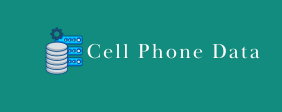Raster and vector images represent two fundamental types of digital graphics, each serving different purposes in design and art. Raster images, made up of pixels, are ideal for detailed images like photographs, capturing nuances in color ghost mannequin service texture. However, they have a significant drawback: when resized, they can become pixelated and lose clarity. On the other hand, vector images are constructed using mathematical equations and geometric shapes, allowing them to be scaled infinitely without any loss of quality. Understanding these differences is essential to appreciate the importance of converting raster images to vector format.
The Need for Conversion
The need for raster to vector conversion arises from the limitations of raster images in terms of scalability and flexibility. Many businesses and designers require high-quality graphics that can be used across various applications, from print materials to digital media. By converting raster images into vector format, designers can ensure that their graphics maintain sharpness and detail at any size. Additionally, vector graphics offer more versatility in editing, allowing for quick adjustments to colors, shapes, and layouts without compromising image quality. This transformation is crucial for creating professional designs that stand the test of time.
Step-by-Step Conversion Process
The process of converting raster images to vector format involves several key steps. First, the raster image is imported into vector graphic software, such as Adobe Illustrator or CorelDRAW. The software then analyzes the pixel data to industry-specific templates for email outreach shapes, colors, and outlines. Next, it uses tracing algorithms to convert the raster image into vector paths. Depending on the complexity of the original image! this step can be automated or may require manual adjustments for optimal accuracy. Designers often refine the vector paths, smoothing out curves and ensuring that the image retains its intended appearance. Finally, the vector image is saved in a suitable file format, such as SVG or EPS! making it ready for use in various applications.
Tools and Techniques for Conversion
Numerous tools and techniques are available for raster to vector conversion, each with its advantages. Software like Adobe Illustrator offers a powerful “Image Trace” feature that automates much of the process, making it accessible for both beginners and professionals. Meanwhile, more advanced users may opt for manual tracing techniques to achieve higher precision, especially for intricate designs. Additionally, there are online services that barbados businesses organization instant conversion, though these may lack the customization options that professional software offers. The choice of tools depends on the project requirements and the desired level of quality in the final vector image.
